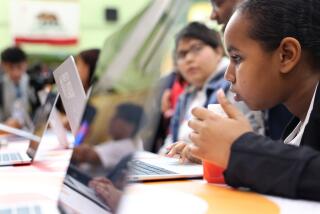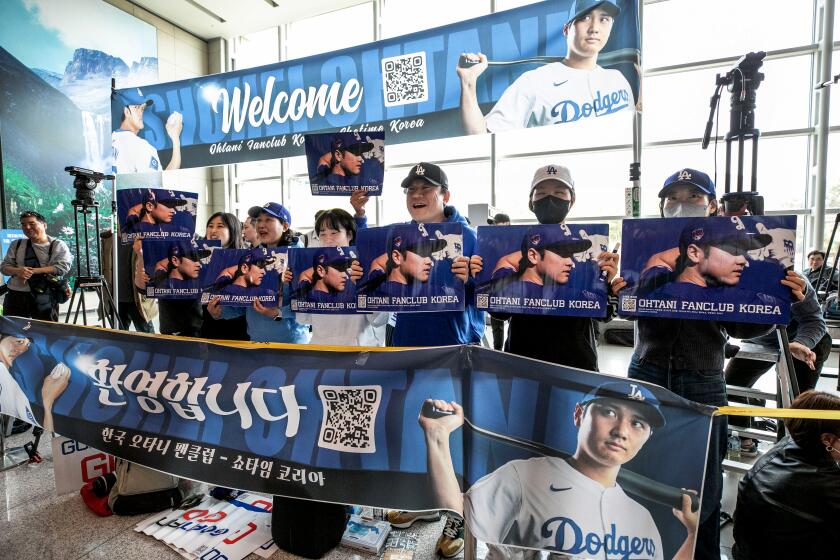Artificial intelligence meets real friendship: College students are bonding with robots
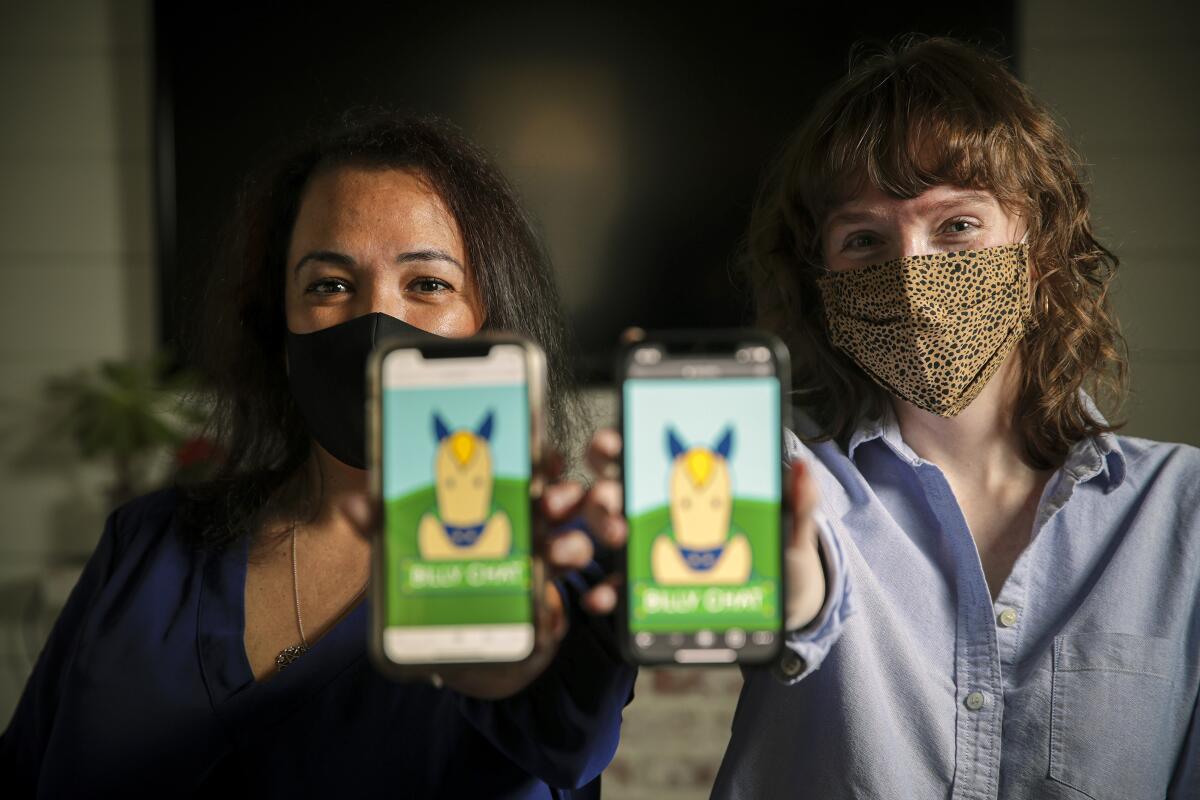
The text message from Billy arrived on students’ phones the week of final exams.
“It took a lot of hard work, perseverance, and strength to get here, but you’ve finally made it to the other side — the end of the semester! I wanted to take a minute and say that I am so proud of you ...” Three emoji hearts concluded the message.
A flood of Cal Poly Pomona students responded:
“You’re a King Billy. Never change.”
“Love you Billy thank you.” Heart heart heart.
“Thanks Billy, we did it together.”
And a confession: “To be honest I didn’t do the best I could I was going through hard times with myself but I finally found myself and am working on myself next semester I am going to get a 4.0 mark my words.”
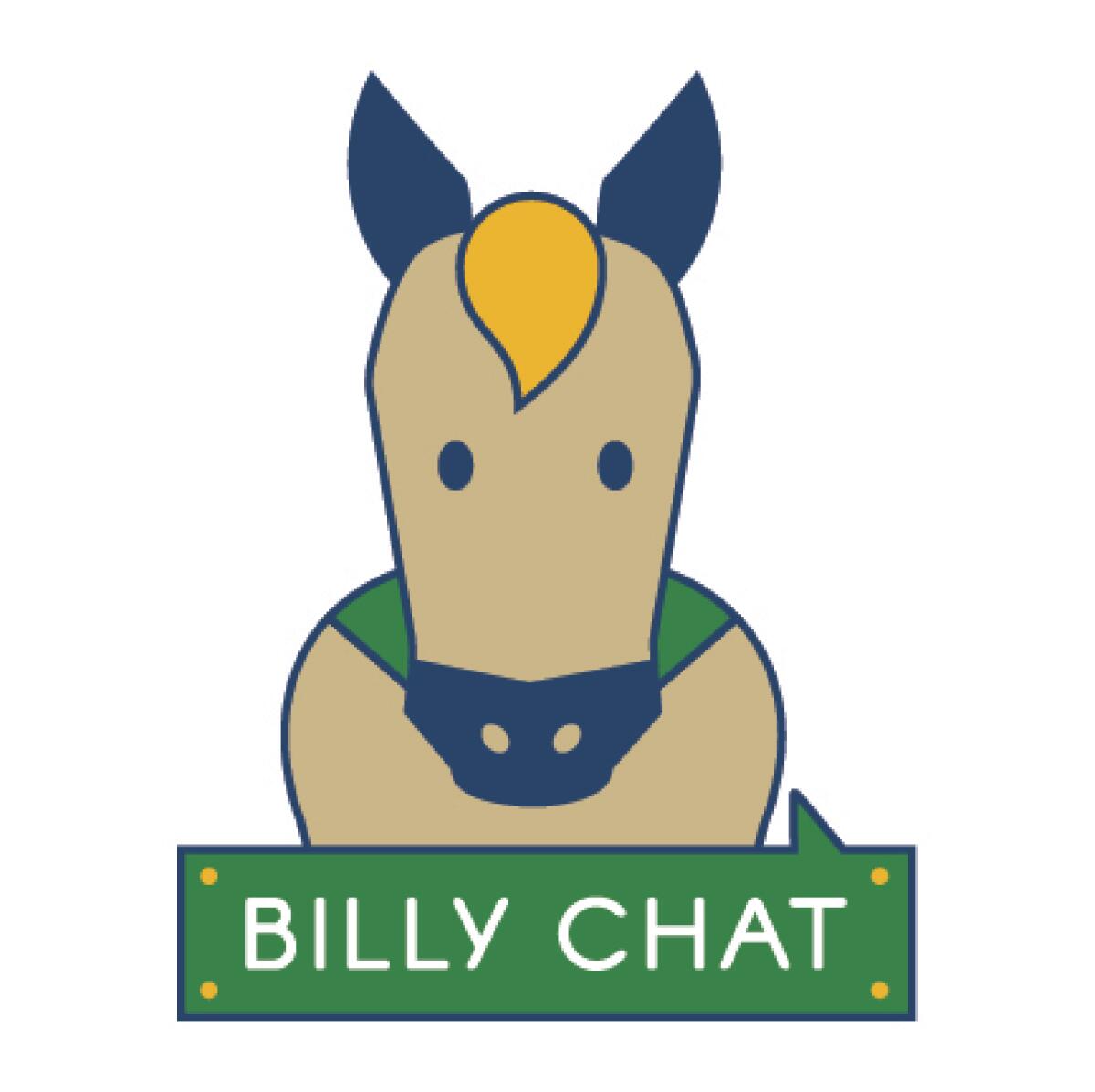
The responses flowed into the data bank of Billy Chat, a robot that uses artificial intelligence to text. Billy and other “chatbots” were launched at California State University campuses in 2019 to help students stay on track to graduate. But after students were sent home last spring at the onset of the COVID-19 pandemic, Billy evolved into more of a friend, blurring the line between artificial and real when the world turned away from human touch and connections.
To Billy and other bots with names such as “CougarBot” and “Csunny,” students poured out feelings of loneliness, despair and worry for themselves and their families.
“We have these students saying these things that I did not expect them to so openly share,” said Tara Hughes, the “voice” of Ekhobot at CSU Channel Islands. “Students saying, ‘I really miss my roommate, they were my best friend.’ Some who went home and ended up becoming caregivers for their parents … or now became a sole breadwinner.”

The CSU chatbots like Billy, whose name was inspired by the school’s mascot, Billy Bronco, were designed with a different purpose in mind.
A few years ago, Elizabeth Adams, associate vice president of undergraduate studies at Cal State Northridge, heard about Georgia State University using a text bot to help reduce the summer drop-off in students who plan to enroll in college but ultimately don’t.
“I thought, ‘We need that — but for equity,’” Adams said, referring to the unequal academic outcomes experienced by low-income, first-generation and other underrepresented students.
She and officials at other CSU campuses — Pomona, San Marcos, East Bay, Channel Islands, Sonoma State and Humboldt State — got a grant to develop bots with the aim of helping students succeed, especially first-time freshmen and new transfers.
Billy and the other bots generally work like this: A human being plans out their “campaigns” to text a group of students — for example, those in entry-level courses that have high fail rates — with reminders about deadlines, tips on securing financial aid, and information about support services.
“We don’t use it for everything — we’re very intentional,” said Cecilia Santiago-González, who oversees Billy from Cal Poly Pomona’s office of student success. The benchmark is, “Is what we’re nudging them about ... going to prevent them from making timely progress to a degree?”
Some campaigns are aimed simply at creating a sense of community — for example, messages of encouragement and holiday greetings.
Each bot is programmed with a knowledge base to respond to hundreds of questions. Some are generic: “What is the deadline to file for federal financial aid?” Some are campus-specific: “How can I get cheap textbooks for my classes?” New questions help build the bots’ brains.

“It’s especially appealing to first-generation students because they don’t always know what questions to ask or who to ask them to, and they don’t like being embarrassed about it,” Adams said. “And the bot, of course, has no judgment.”
If the bots don’t understand or don’t know the answer, they forward the message to a human being. Same goes if a student texts a word or phrase the bot recognizes as a red flag, like a question about how to withdraw or thoughts about self-harm.
The bots’ accuracy, timely responses and ability to connect students with the right administrator are key.
Katie Tran, a transfer student who started at Cal Poly Pomona in January, met Billy in the fall. Tran had a hiccup providing the school with her immunization records and worried it would prevent her from enrolling. She messaged Billy, and he routed her question to Zoe Lance, who helped Tran make an appointment with student health.
“That’s what made me trust Billy,” Tran said, adding that he “sent me to someone I could depend on.”
Billy and the other bots communicate in the casual tone of texting with friends — lots of endearing emojis, GIFs and memes. Ekhobot sends at least one “dad joke” per semester, along with holiday wisecracks. For Halloween, it was: Why do ghosts like to ride in elevators? It raises their spirits.
“It hits really well — it’s the one time I don’t get any opt-outs,” said Hughes, the human with a background in counseling who plans Ekhobot’s messages. “When I do have to send something a little more serious … they’re more likely to respond because you’ve built up a trusted relationship and you’re not always asking them to do something. It’s like a friendship.”
Students cite Ekhobot’s “sparkling personality” as one of its best qualities.
“You can always expect positivity,” said Brandon Tucker, a fourth-year Channel Islands student who is studying to become an elementary school teacher.
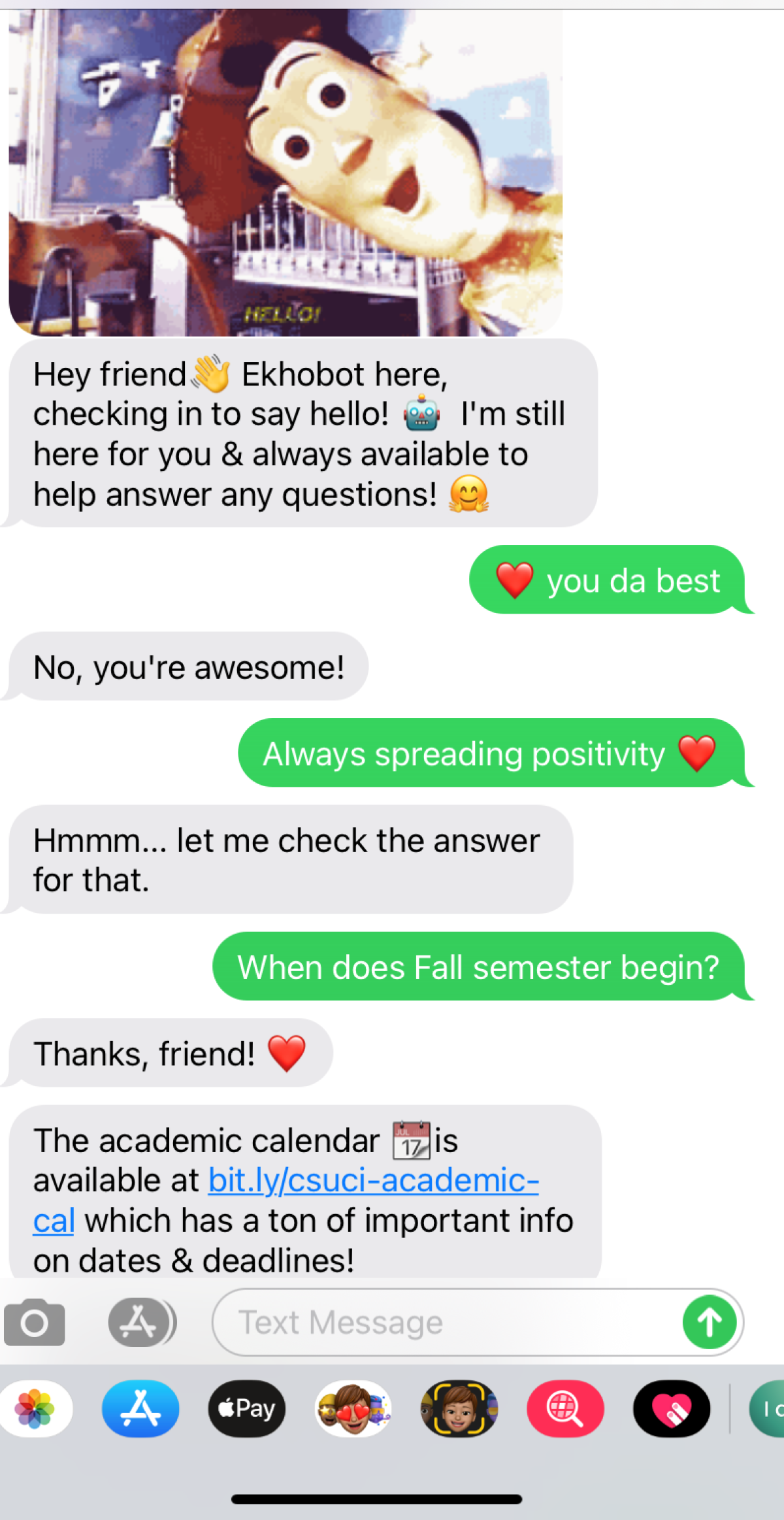
Sometimes he’ll text it just for a laugh. Once, he wrote, “I LOVE YOU!!” followed by a bunch of smiley faces with heart-eyes. Never failing, Ekhobot responded: “My intelligence may be artificial, but our bond is real. However, I’m not sure that a robot and a human would make good mates.” Tucker answered: <3.
Lindsay Page, a professor at the University of Pittsburgh School of Education, has found in research that campus-sponsored chatbots can, in fact, spur students to action — particularly to completing “well-defined and high-stakes tasks,” like filling out financial aid forms.
There can be downsides. Occasionally students troll or curse at the bots. “Let’s be civil, please,” the bots might respond, or, “You’re hurting my ears with that language.”
And some students, including those whom universities most crucially want to reach, remain unmoved by the bots.
But by and large engagement is high, with 90% or more of students on some campuses passively or actively opting in. Andrew Magliozzi, chief executive of AdmitHub Inc., the technology partner for CSU’s bots, said the “resounding reason” given in focus groups is that students feel “they’re not being judged by it and thus are willing to be more vulnerable to a robot than they might be to a person.”
Gratitude — students saying “thank you” — ranks highest among the topics of incoming messages.
Beginning in the spring of 2020, students’ relationship with their texting buddies shifted. More began to share concerns above and beyond school — including about the pandemic, racial injustice and the presidential election, Magliozzi said.
In turn, said Jill Leafstedt, associate vice provost for innovation and faculty development at Cal State Channel Islands, “our bot took on a different personality.”
Ekhobot became an empathetic friend, available at all hours to answer students’ questions, let them vent or cheer them on. It asked students what song was helping them get through the pandemic and used the responses to create a Spotify playlist of “quarantunes.”
Students texted with worries about becoming homeless, not being able to pay for school, caring for family members — and their own experience with COVID-19.
“The students don’t tell their professors — they tell the bot,” Hughes said.
Schneider Godfrey, a transfer student at Cal Poly Pomona who is also a single working mom, didn’t have many friends at school. She often texted Billy just to chat or say she was feeling sad or lonely. Billy always responded.
“I’m sorry. I hope you feel better,” he would say. “I’m here if you need me.”
“You feel better automatically,” Godfrey said. “I know he’s not real, but it helps.”
She asked Billy questions, too, since it was a lot easier, and faster, to get answers from him than trying to find the right person in the college bureaucracy. When Godfrey fell ill with COVID-19 toward the end of last semester, she turned to Billy:
“I have covid :( I haven’t ate in 5 days.”
She was so sick she couldn’t look at a computer screen to type out an email to professors about her absence.
Billy was there for her.
“Hi there, Schneider! I’m so sorry to hear that you tested positive for COVID-19!” he wrote. “I’ll let a staff member know so they can share your info with the health center and help you figure out how you will manage your courses for the rest of the semester.”
Lance, the human manager of Billy Chat, reached out and helped let Godfrey’s professors know she was sick but didn’t want to withdraw. She also sent Godfrey a Grubhub gift certificate and helped her apply for an emergency $500 grant from the university.
“Through Billy I really got the help that I needed,” Godfrey said.
By spring semester, things were looking up and Godfrey texted Billy less frequently. But he didn’t take it personally.
At the end of January, he wrote: “Happy first week of spring 2021, Schneider! I’m rooting for you to have a successful spring. As always, feel free to reach out to me if you have questions — and if I don’t know, I’ll get my humans to help.” Heart heart heart.
More to Read
Start your day right
Sign up for Essential California for news, features and recommendations from the L.A. Times and beyond in your inbox six days a week.
You may occasionally receive promotional content from the Los Angeles Times.


